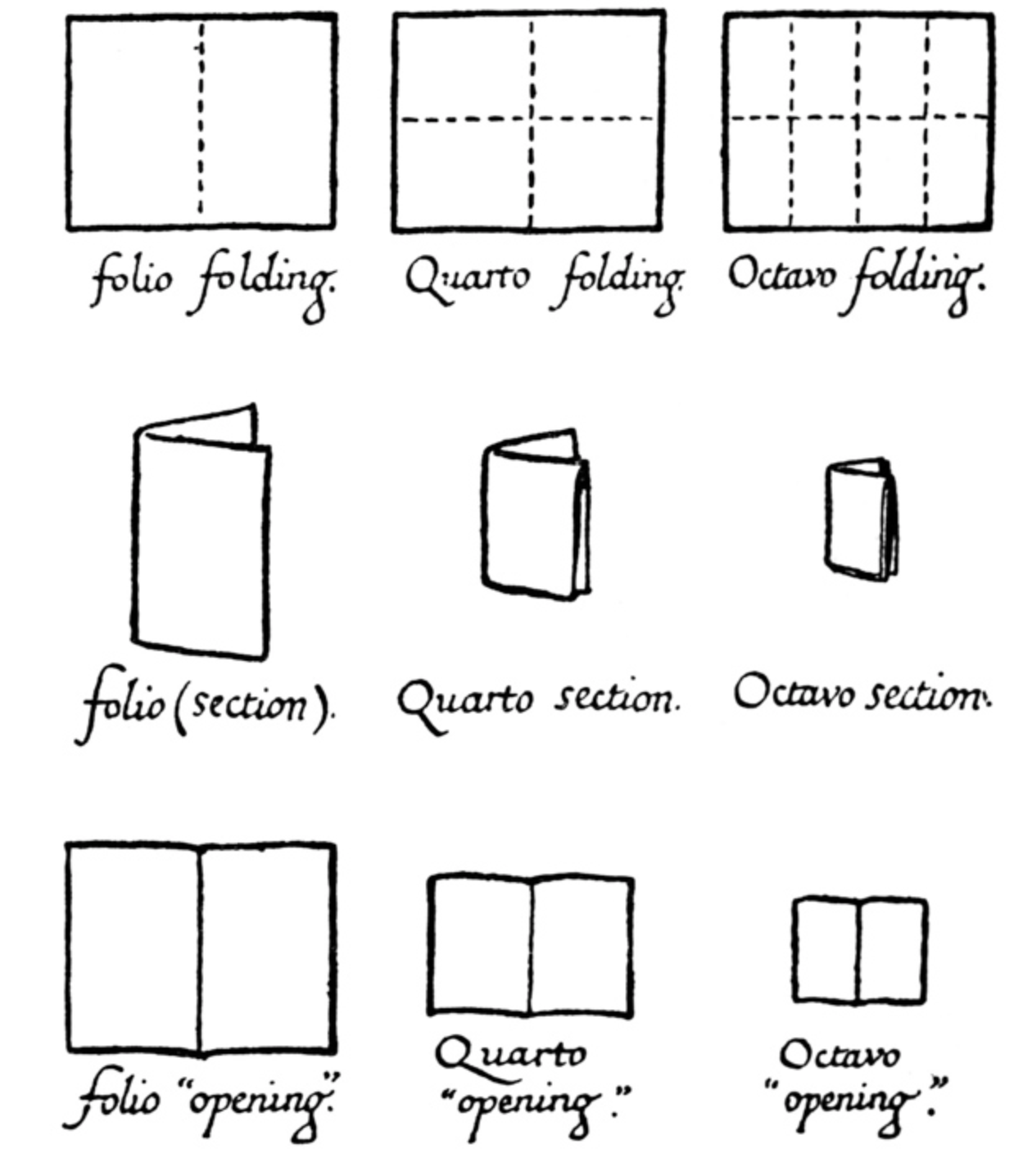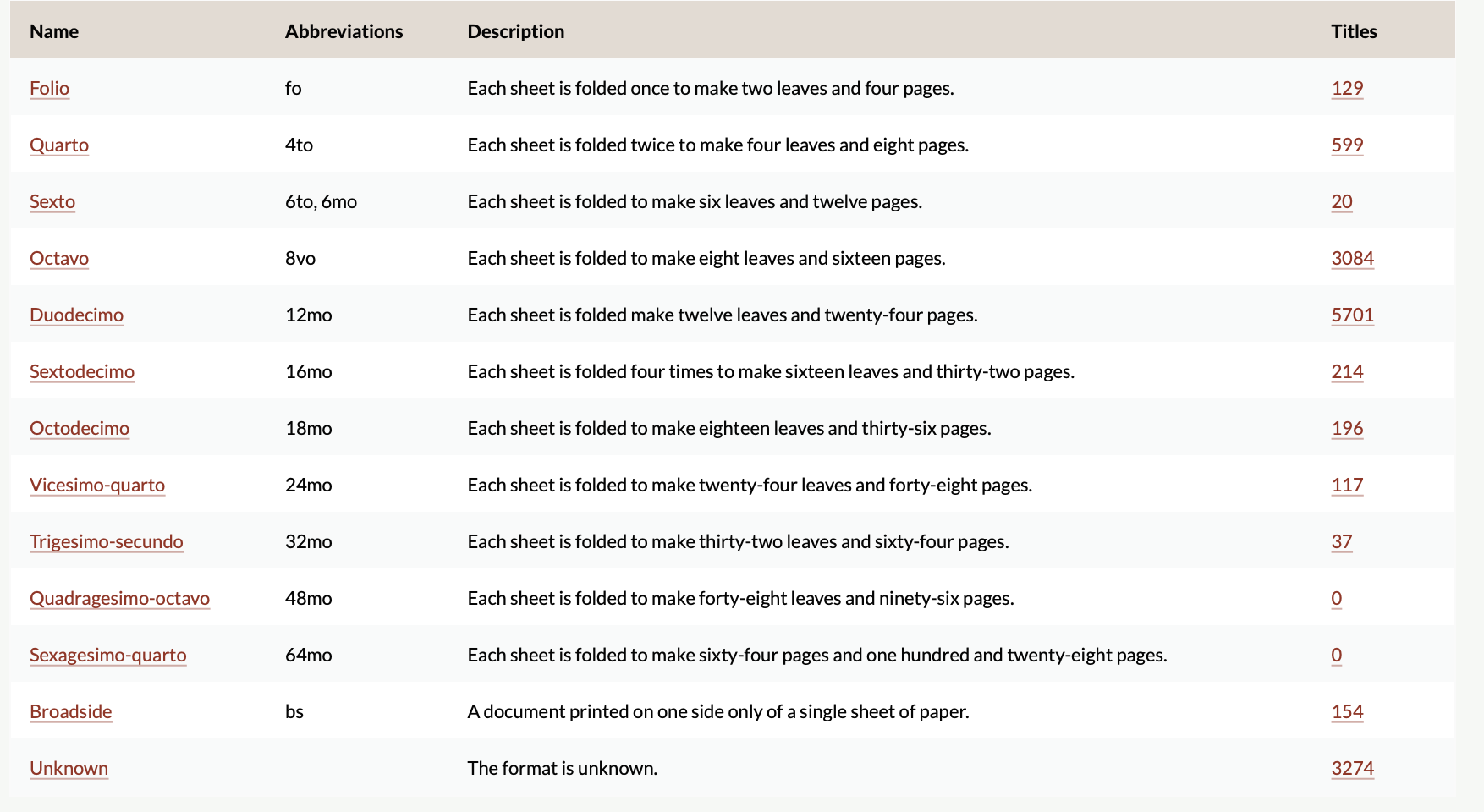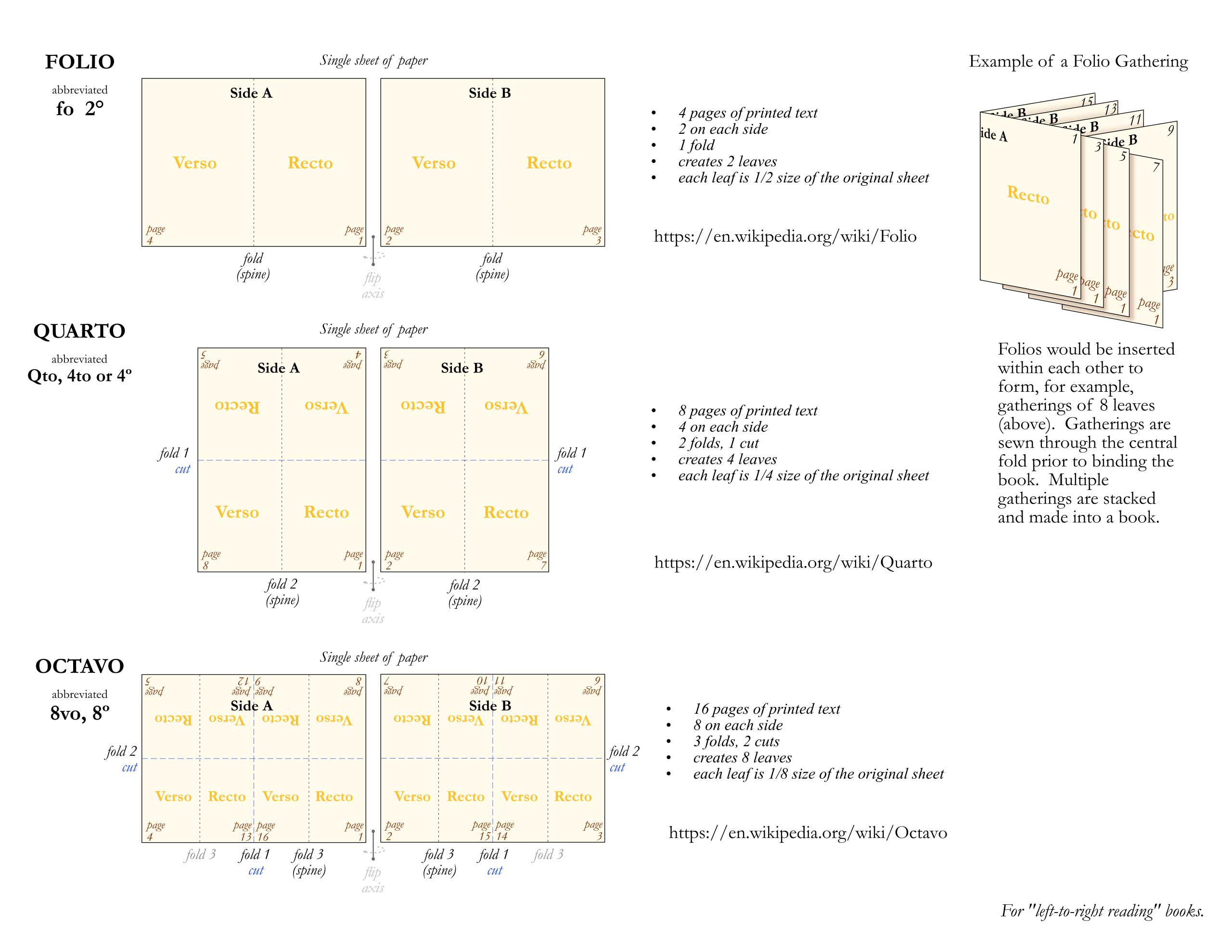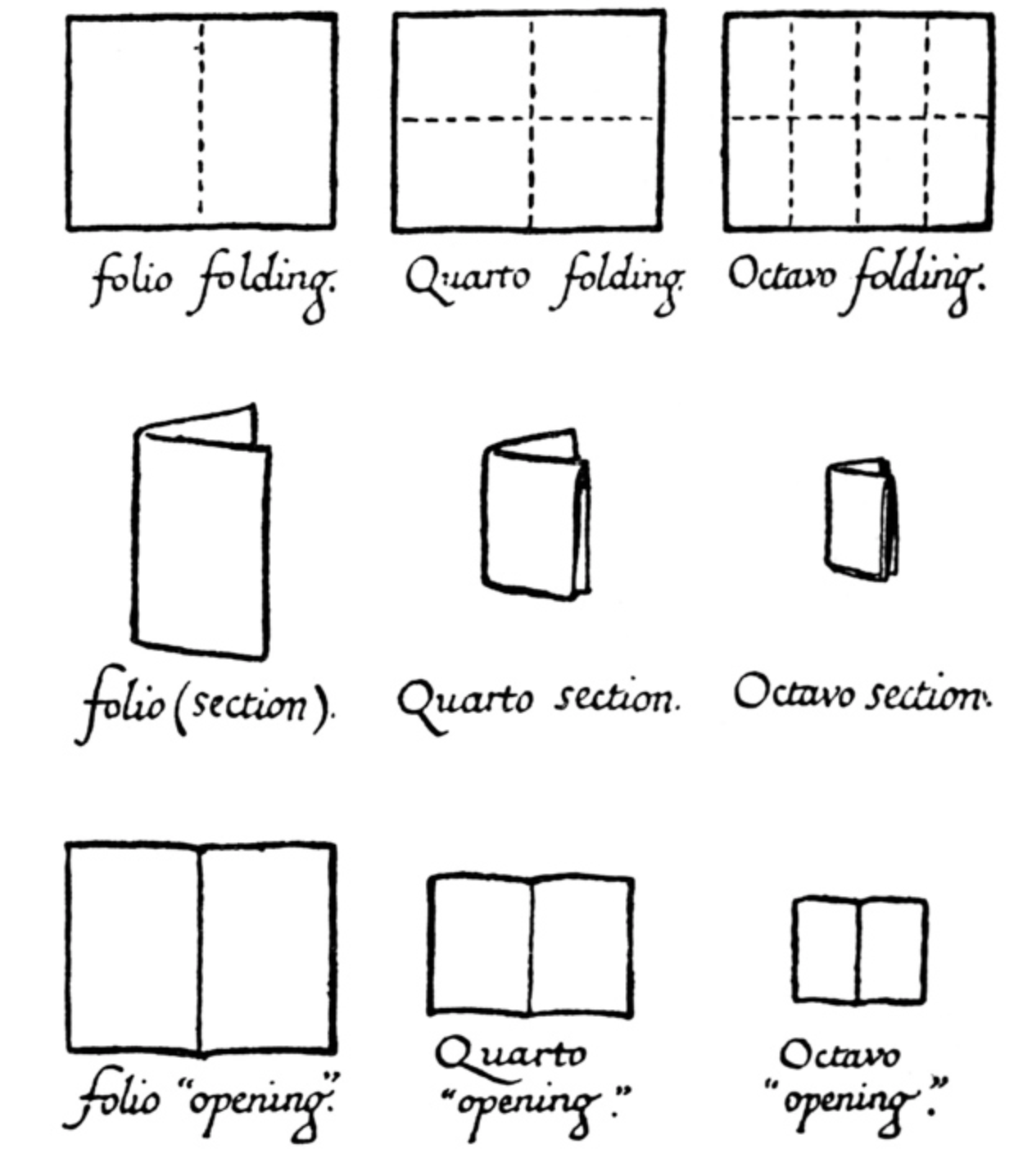This post is part of our By Our Books: Bibliography in the WPHP Spotlight Series, which will run through July 2023. This series attends to the bibliographical fields of the WPHP title records, tracing the history of our thinking about our descriptive practices and how they are informed by the sources available to us and by our feminist ambition to recognize and reconstruct women’s labour in print, broadly conceived.
Authored by: Michelle Levy
Edited by: Kate Moffatt and Kandice Sharren
Submitted on: 07/26/2023
Citation: Levy, Michelle. "Matters of Format." The Women’s Print History Project, 26 July 2023, https://womensprinthistoryproject.com/blog/post/127/.
 Figure 1. Edward Johnston, Project Gutenberg's Writing & Illuminating, & Lettering.
Figure 1. Edward Johnston, Project Gutenberg's Writing & Illuminating, & Lettering.
Format is defined by John Carter and Nicolas Barker as “the structure of a volume in terms of the number of times the original printed sheet has been folded to form its constituent leaves . . . Thus in a folio each sheet has been folded once, in a quarto twice, in an octavo three times” and so on (109).
In the WPHP, each title record may be assigned one of the following formats. In the “format” section of the database, you find a list of all formats, their common abbreviations, a description and the number of titles assigned to each format:
 Figure 2. Screenshot of the WPHP “Format” page as of 7 June 2023.
Figure 2. Screenshot of the WPHP “Format” page as of 7 June 2023.
As of early June 2023, we have a total of 13525 title records; of these 10251 have been assigned formats, and 3274 have unknown formats, or 76% of our title records have known formats and 24% of title records have unidentified formats. Of the known formats, the most common by far is duodecimo, at 5701 titles, or 42% of all title records, and 56% of title records with an identified format, followed by octavo, at 3084 titles, or 23% of all title records, and 30% of title records with an identified format. On the one hand, the popularity of these formats is in keeping with what we know of the long eighteenth century, as consumers demanded books in more portable, accessible and inexpensive forms; on the other hand, the large number of duodecimo and octavo titles may reflect bias in our data sources. We have used The English Novel extensively, for example, and most novels were published in duodecimo or octavo. On the other hand, broadsides and other more ephemeral forms of print are far less likely to survive and be included in the ESTC (see Tolonen), our foundational dataset that is a source in nearly 9000 title records, and this may explain why there are comparatively so few of these (154) in our title records. We are also still looking for our first quadragesimo-octavo (48mo) and sexagesimo-quarto (64mo). Please reach out to us if you have any leads!
According to The Oxford Companion to the Book (2010), “at the heart of a bibliographical description is a statement of format and a collational formula.” Both of these tasks require access to the physical books and, given constraints on resources, our location in Canada, and the scale of our dataset, we are rarely able to generate information on format ourselves (and do not include collation formulas) as we are able to hand-verify only a small percentage of our title records. Mostly, we rely on existing sources, including library catalogues, bibliographies, and publisher advertisements and catalogues. Fortunately, from these sources, we have been able to attach formats to over three-quarters of our title records, another example of the importance of aggregating existing bibliographical knowledge for large-scale projects like the WPHP.

Figure 3. Created by Wikipedia Commons user Skaalr and shared under a Creative Commons license: (CC BY-SA 4.0).
WPHP Records Referenced
Formats (field)
The English Novel (source)
Works Cited
“bibliography (1).” The Oxford Companion to the Book. Oxford UP, 2010, n.p.
Tolonen, Mikko, et al. "The Anatomy of Eighteenth Century Collections Online (ECCO)." Eighteenth-Century Studies, vol. 56 no. 1, 2022, p. 95–123.
